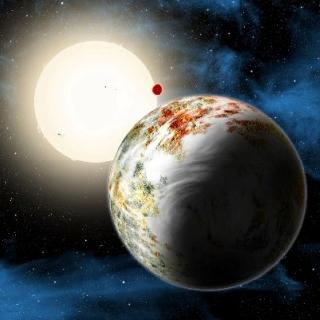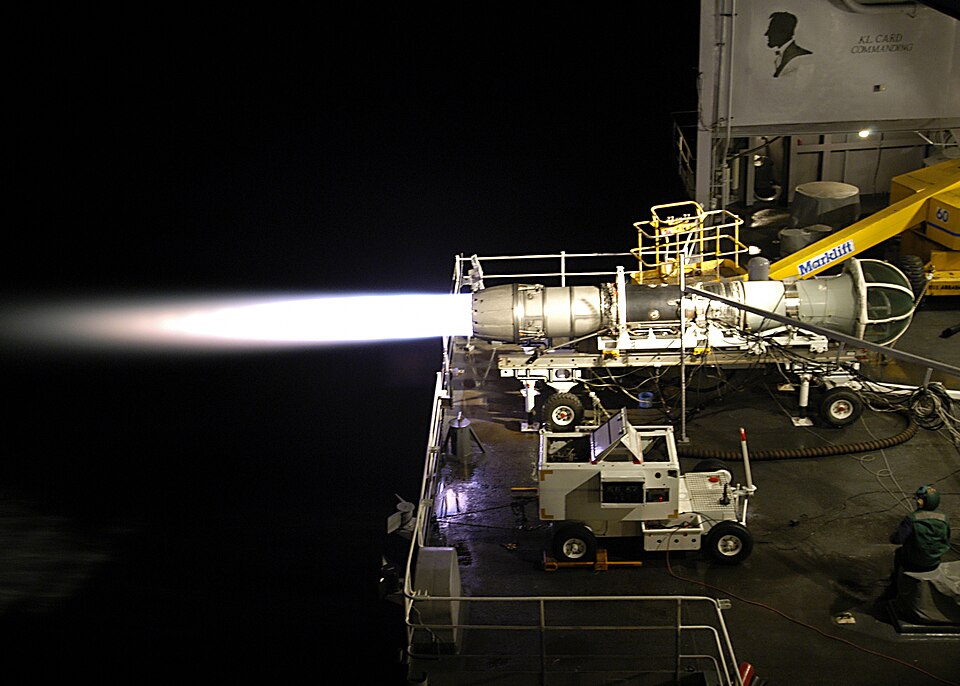
The newly discovered "mega-Earth" Kepler-10c dominates the foreground in this artist's conception. Its sibling, the lava world Kepler-10b, is in the background. Both orbit a sunlike star. Image credit: David A. Aguilar (CfA)
CAMBRIDGE (BNS): Astronomers have stumbled upon a mammoth planet -- a rocky world weighing 17 times as much as Earth and located about 560 light-years away in the constellation Draco.
The planet, Kepler-10c, circles a Sun-like star once every 45 days.
Originally spotted by NASA's Kepler spacecraft, Kepler-10c was known to have a diameter of about 18,000 miles (29,000 km) -- 2.3 times as large as Earth, which suggested it fell into a category of planets known as "mini-Neptunes", which have thick, gaseous envelopes.
In their latest discovery using the HARPS-North instrument on the Telescopio Nazionale Galileo in the Canary Islands to measure the mass of Kepler-10c, the astronomers found that it weighed 17 times as much as Earth -- far more than expected.
This showed that Kepler-10c must have a dense composition of rocks and other solids.
"We were very surprised when we realised what we had found," said astronomer Xavier Dumusque of the Harvard-Smithsonian Center for Astrophysics (CfA), who led the data analysis and made the discovery.
"This is the Godzilla of Earths!" added CfA researcher Dimitar Sasselov, director of the Harvard Origins of Life Initiative.
"But unlike the movie monster, Kepler-10c has positive implications for life," the scientist said.
Theorists believed such a huge planet couldn't form because anything so hefty would grab hydrogen gas as it grew and become a Jupiter-like gas giant. Kepler-10c, however, is all solids and much bigger than previously discovered "super-Earths", making it a "mega-Earth."
Planet formation theories have a difficult time explaining how such a large, rocky world could develop. However, a new observational study suggests that it is not alone, and more mega-Earths in the Universe could be eventually discovered.
The latest discovery also has profound implications for the history of the Universe and the possibility of life.
The Kepler-10 system, which also hosts a 3-Earth-mass "lava world," the Kepler-10b, is about 11 billion years old, which means it formed less than 3 billion years after the Big Bang.
The early Universe contained only hydrogen and helium.
Heavier elements needed to make rocky planets, like silicon and iron, had to be created in the first generations of stars. When those stars exploded, they scattered these crucial ingredients through space, which then could be incorporated into later generations of stars and planets.
This process should have taken billions of years. However, Kepler-10c shows that the Universe was able to form such huge rocks even during the time when heavy elements were scarce.
"Finding Kepler-10c tells us that rocky planets could form much earlier than we thought. And if you can make rocks, you can make life," said Sasselov.
The team presented its findings in a press conference at a meeting of the American Astronomical Society (AAS) on Monday.
 Previous Article
Previous Article Next Article
Next Article













The Indian Air Force, in its flight trials evaluation report submitted before the Defence Ministry l..
view articleAn insight into the Medium Multi-Role Combat Aircraft competition...
view articleSky enthusiasts can now spot the International Space Station (ISS) commanded by Indian-American astr..
view article